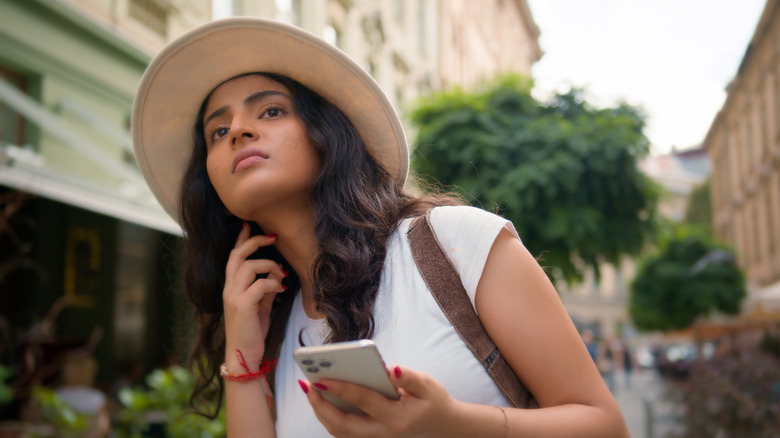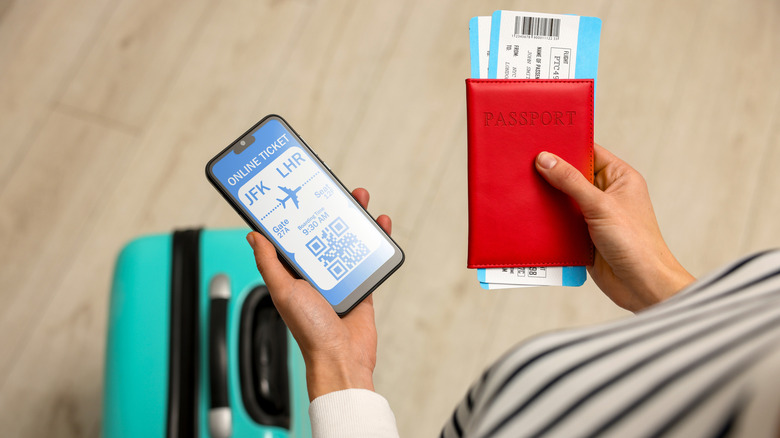Rick Steves' Fool-Proof Advice For Tourists Who Reserve Sightseeing Tickets Online
Why can't you find that darned email? There you are, standing at the museum entrance, at exactly the time you're supposed to be there. You scroll through your inbox, desperate to find your reservation. You search for the name of the museum; when that doesn't work, you search for "ticket," "reservation," and "receipt." Nothing comes up. The line behind you is growing. Sweat is beading on your brow. You know you purchased the tickets. You remember seeing the confirmation email. Was it written in the local language? Did you delete it by accident? Did it somehow end up in your spam folder? The uniformed guard sighs. Someone behind you blurts, "Hey, can you hurry it up?" Why is this happening? Aren't vacations supposed to be relaxing?
True to form, travel aficionado Rick Steves has devised a way to avoid this situation, and it's more important now than ever. "It used to be, there were two ways of doing things: the tech-savvy way, and the old-fashioned way," writes Cameron Hewitt (a tour guide and co-author for Rick Steves) in a blog post. Crediting Rick Steves for this advice, Hewitt continues: "Now the two options are 'get with the tech' or 'get left behind.' If you're heading to Europe soon, it's time to get comfortable with technology."
So how do you keep up with all those digital proofs-of-purchase? How do you prevent things from getting lost in the labyrinth of your phone? "Consider taking a screenshot of the QR code when you receive it, so it's easier to find quickly in your camera roll." This is just one of the things you can do with your phone before leaving on vacation.
How to use your photos to keep QR codes
So many online tickets boil down to a QR code, those patterned squares that have widely replaced bar codes and can be quickly scanned. These were already popular around the world before 2020, and COVID radically increased their use. Digital receipts save on paper, and scanning a QR code connects you to your reservation and all of its data — name, type, price, date of purchase, date and time of event, and so on — in a matter of seconds. The rest of the receipt probably won't matter much, as long as that image is crisp and clear. Customers typically receive these QR codes by email, though they could also arrive by text, WhatsApp, or special application.
Most of us get a lot of emails, and it's easy to lose track of a specific message. We know it's in there somewhere, but travelers often forget to have their QR code ready when the time comes to scan it. This is especially frustrating in remote locations, like national park entrances (where a cell signal may cut out) or high-stress environments, like Rome's most popular landmark that now demands an appointment time for entry. If you take a screen shot of your QR code, you can quickly scroll through your camera roll, which should be saved to your phone and requires no data or Wi-Fi. "It's wonderfully simple," writes Cameron Hewitt.
All of this depends on a working phone, of course. A camera roll is only useful when you can access it; if your battery dies or your device is misplaced, it all goes out the window, so be careful. Here's what to do if you lose your phone while traveling.

